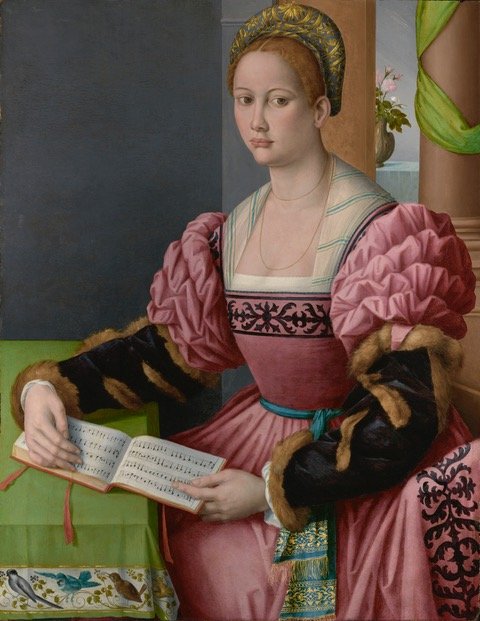Lammermuir Festival: Listening to Pictures - Renaissance Art & Music
Athelstaneford Church - 17/09/22
The festival programme promises a “multimedia production” with the “juxtaposition of music with the visual”. But it is so much more than that. Based on research led by musician and art historian Professor Tim Shephard at Sheffield, and in consultation with his team, the Orlando Consort have pulled off another feat of inspired programming. Renaissance-era paintings, prints and illustrated artefacts are projected and wordlessly explored on screen while the Consort link them to their acapella rendition of contemporary songs, sacred and secular: plainchant, polyphony, madrigal.
Renaissance images are so often full of musical activity; some feature lyrics and carefully depicted notation, and the team has taken pains to source relevant pieces. Beyond that, the images and songs are used not only to delight and entertain, but to represent ways that Renaissance people actually viewed life, death, status, God and all sorts of love. The past proves a pretty foreign country in intriguing ways.
On offer, one hour before the concert, was a talk by Shepherd, expanding on the underlying culture of the Renaissance population. For example, their deep mistrust of music’s power to seduce women, alongside their conflation of sacred and profane – or at least courtly – love. Earthly love songs were cheerfully applied to the Virgin Mary. A key text was the Roman de la rose, the bloom itself the central symbol of human and divine Love. The Church itself found a new willingness to embrace classical paganism, especially Apollo, within their symbolism. Surprisingly, only about half of tonight’s audience took advantage of this fascinating talk. However, throughout their performance the Consort conveyed the essential points as they took it in turns to introduce each section.
The four members comprise countertenor, two tenors and baritone. For one week only, Nicolas Mulroy has stepped manfully in to replace tenor Mark Dobell, called to the nation’s service in Westminster Choir for the Queen’s funeral. Mulroy’s integration is seamless. They stand in the dark under the lofty timber-lined ceiling of Athelstaneford Church. They are about a metre apart behind black lecterns, each lit by a pair of tiny LEDs, beneath the bright images on the projection screen. Baritone Donald Greig furnishes the starting notes, plucked perfectly from thin air. The other-worldly purity of plainsong and unaccompanied polyphony soars out for a glorious ninety minutes. All is heightened by there being absolutely nothing, not even my own hand, visible in the darkness, only the artwork and the tiny pricks of lectern light in the unfamiliar luxury of this all-enveloping black.
Two of the sacred pieces were written to celebrate the consecration of Florence Cathedral in 1436. Renaissance churches were built to furnish a simulacrum of the Heaven to come. Hence the depictions of angelic choirs singing Glorias. Upon a soul’s ascent, these divine representations would transform into reality. Meanwhile here in earthly churches, human choirs would try to give a foretaste of those angelic sounds.
You know what I’m about to say. Tonight the Orlando Consort effortlessly took us one major step towards Heaven.
